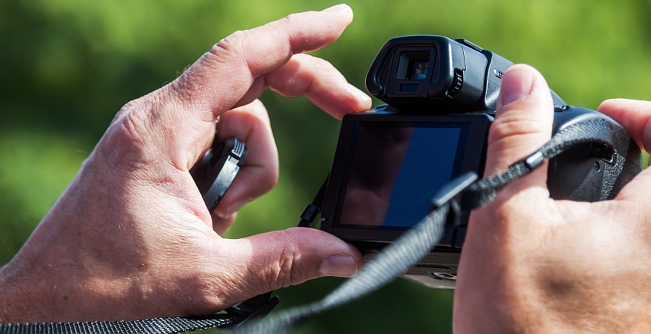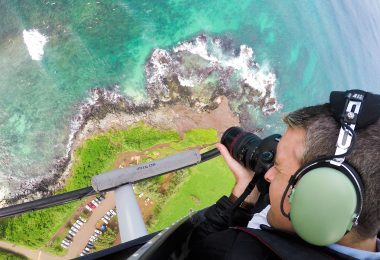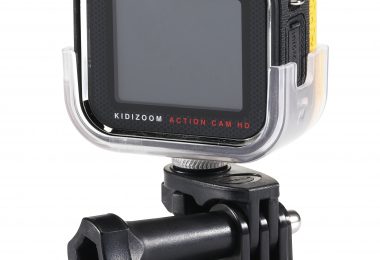Most of us have a digital camera and not just in our phones. They allow us to take high-resolution pictures more easily, offering us a wider range of functions, but DSLR’s are for people who want to take their photography experience a step further, giving them better control, more freedom and creativity.
Gone are the days when DSLR’s were made just for professionals; major brands now offer products with a combination of advanced photography and ease-of-use, catering to novices and enthusiasts who are looking to make that leap. First things first:
What is a DSLR camera?
DSLR stands for Digital Single Lens Reflex. This basically means that the viewing mechanism within the camera utilises different mirrors and prisms which translates to you being able to capture exactly what you see through the lens with no detriment to image quality. This is different from general compact digital cameras, which use digital enhancement. For example, the zoom function in DSLR’s would result in no drop in image quality whereas in compacts, the images would get more and more pixelated with further zooming.
There are several other features which distinguish DSLR’s, the most important of which is the interchangeable lens. This allows photographers the freedom to use the perfect lens for the shot they are about to take, from wide-angle to telephotos. They also come with a large image sensor, a chip that converts the picture you are taking into digital form. This is one feature where size does matter, as the larger pixels aid in producing images of sharper quality.
The perfect shot
Ever notice those F1 photos where the racing car is standing still, as if frozen, while the surroundings are an absolute blur? This is where DSLR’s come in handy. No-one’s reflexes are good enough to take that one single shot of pure perfection. DSLR’s come with speed, offering you fast focus and zero shutter lag, giving you the ability to take multiple pictures in quick succession, a feature called burst mode.
Where the DSLR truly shines is in your hands with the amount of control it gives you. You have the freedom to choose and alter settings for aperture, shutter speed, focal length and ISO (sensor sensitivity). Initially, this may seem like too much choice and you will find yourself floundering over what exactly f16 does when combined with an ISO of 9000, but the more you practice and experiment, the more you will find yourself getting used to knowing the exact effect you want and how these correspond to the features on your camera.
A feature everyone is familiar with (and, in a way, receives undue attention) is the image resolution. This is partly a result of advertising from phone companies, which, whenever speaking of their camera functions, refer to how many megapixels it has. Although image resolution is important for clarity of picture, don’t rely on it too much, as, unless you’re enlarging your photographs or zooming in for further edits, it would end up being a redundant option on your DSLR.
Types
Now that you’ve familiarised with some of the features that go into making a DSLR, it’s important to make sure you know how many types of DSLR are out there and how much they usually cost – and DSLR’s can be quite a strain on the wallet, but a serious hobby requires a serious investment.
There are three types of DSLR camera (or rather, variations of them): Standard, Single Lens Translucent Cameras (SLT) and Compact System Cameras (CSC). It is worth noting that all these cameras have features on top of all the ones you get with your compact camera, such as removable storage, lithium-ion batteries and flash. The difference being that you get more control, such as adding a more advanced flash gun or larger memory cards.
Prices for standard DSLR’s start from around £300. This is recommended for professionals and novices alike. Keep in mind that these are bulky contraptions as a result of the number of features they offer, so if you’re planning on doing a lot of running around, you need to plan ahead because you won’t be able to take these with you everywhere.
SLT’s on the other hand are mostly for photographers interested in action, sports and wildlife. They have faster focusing which allows for pictures to be taken in motion. However, due to their translucent mirror and electronic viewfinder, composing images is a harder task. These start from around £330.
CSC’s offer, in a way, the best of both worlds when it comes to compacts and DSLR’s. They are not as bulky, but offer pretty much the same range of functions as a standard DSLR. They have easy-to-use settings which takes a lot of the choice out of the user’s hands, but the range of lenses available are small. They, like the SLT, also use an electronic viewfinder, and due to the smaller girth, you have to go into the menu options manually every time you need to change something since there is less room on the body for quick-fix functions; they also cost pretty much the same as a standard.
When making your decision, it’s always best to consider it a balancing act and let your needs tip the scales.








